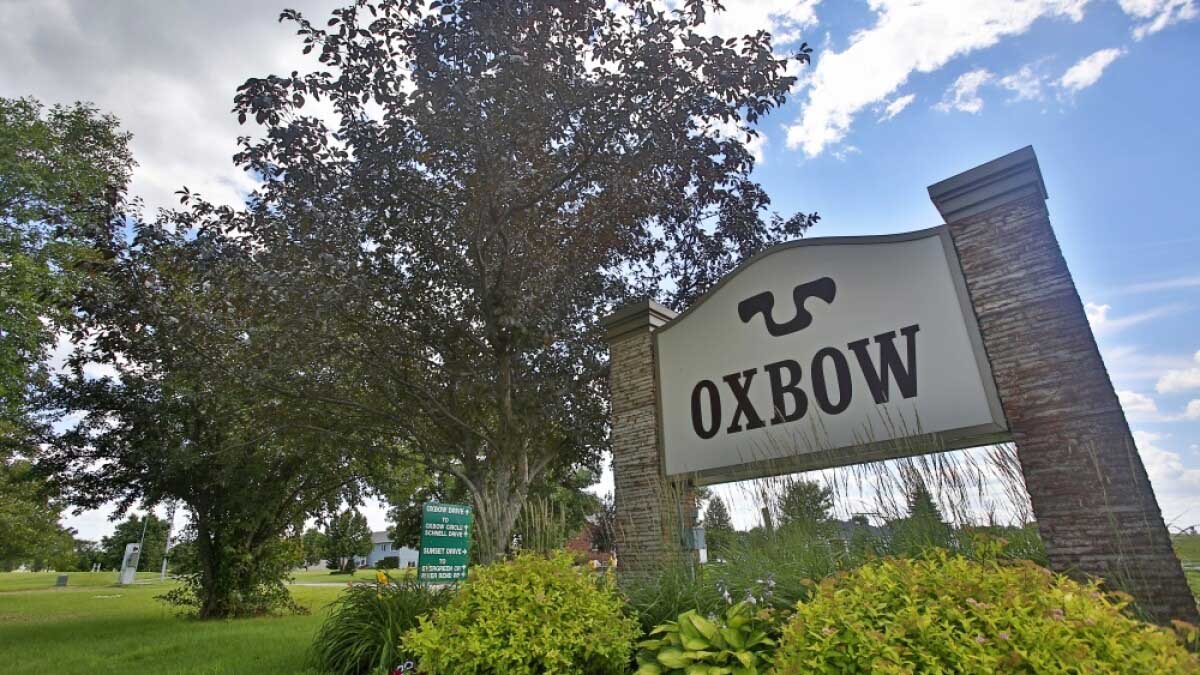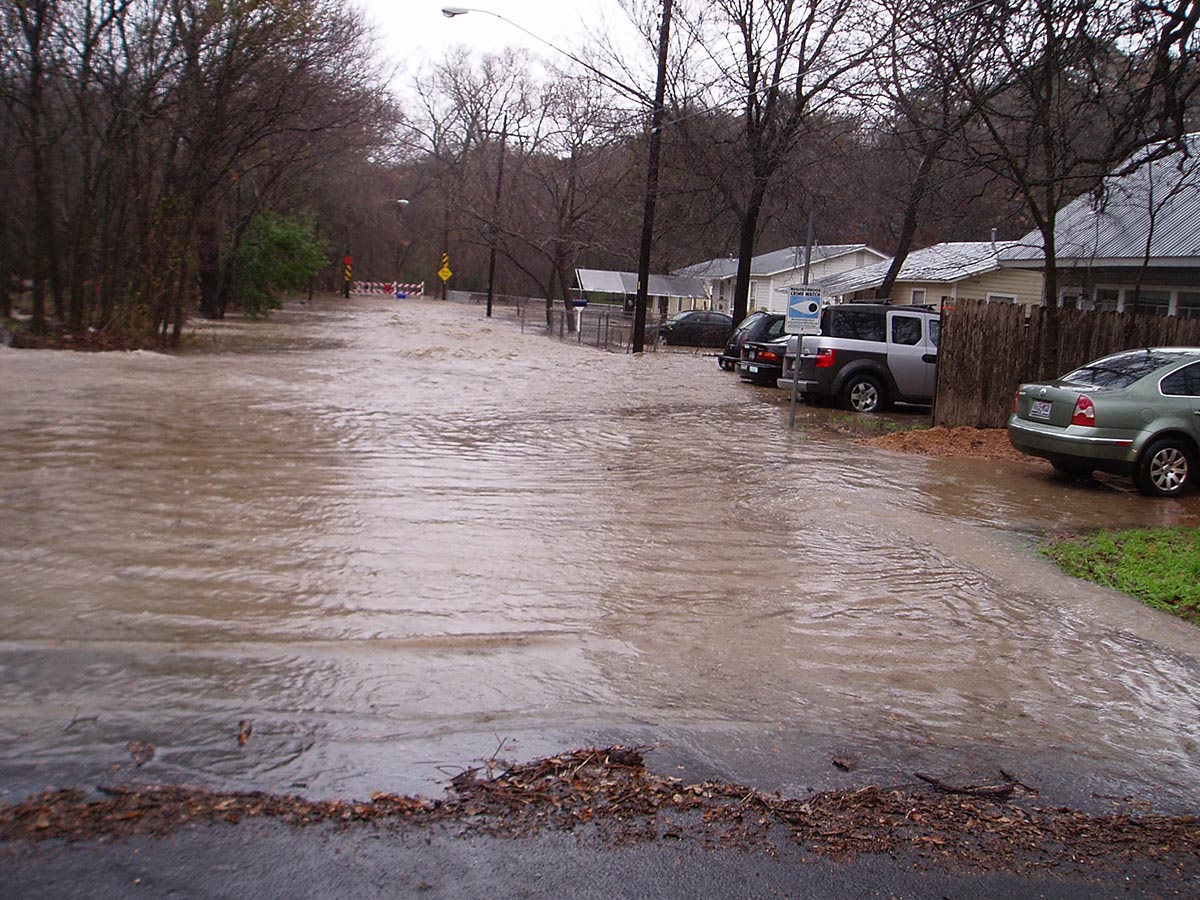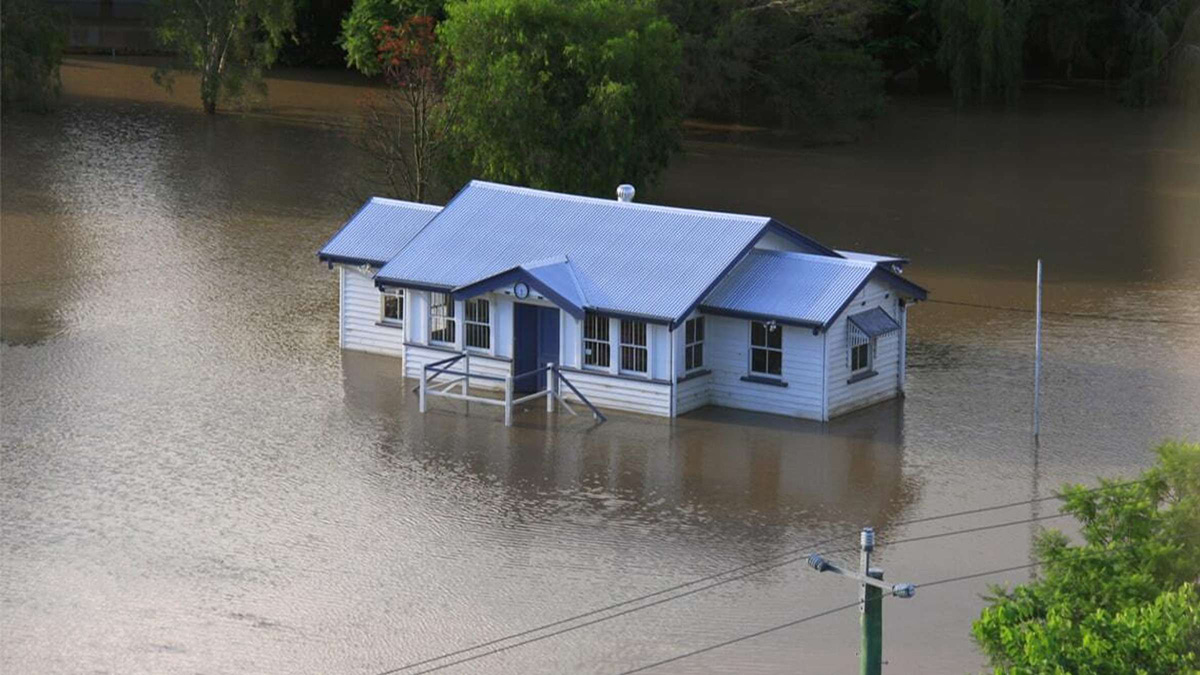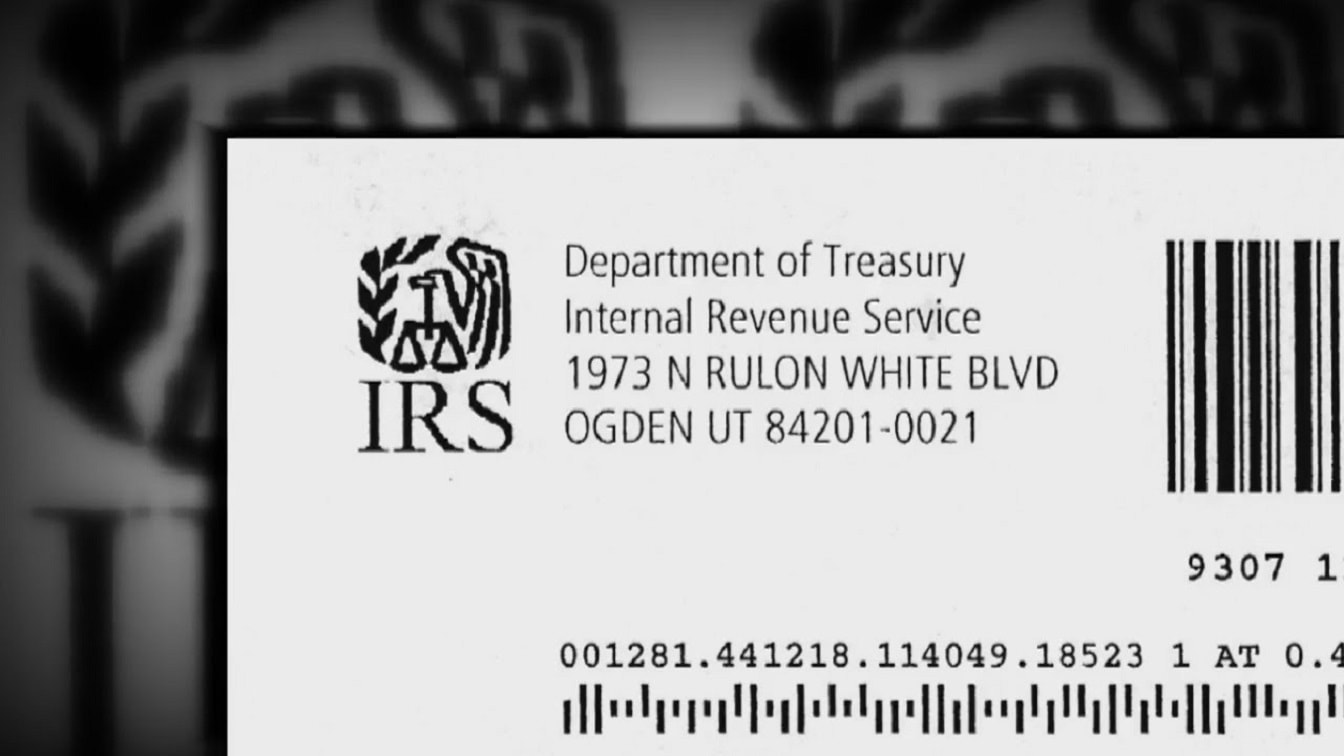Home>Finance>Where Did The Money Come From For Oxbow, ND Flood Buyouts


Finance
Where Did The Money Come From For Oxbow, ND Flood Buyouts
Modified: December 30, 2023
Discover the financial source behind the Oxbow, ND flood buyouts. Unveil the funding details and learn how the finance was secured for this significant project.
(Many of the links in this article redirect to a specific reviewed product. Your purchase of these products through affiliate links helps to generate commission for LiveWell, at no extra cost. Learn more)
Table of Contents
- Introduction
- Background of Oxbow, ND Flood Buyouts
- Funding Sources for Oxbow, ND Flood Buyouts
- Federal Grants for Oxbow, ND Flood Buyouts
- State Contributions for Oxbow, ND Flood Buyouts
- Local Funding for Oxbow, ND Flood Buyouts
- Private Donations for Oxbow, ND Flood Buyouts
- Challenges and Criticisms of Funding for Oxbow, ND Flood Buyouts
- Conclusion
Introduction
When natural disasters strike, they can leave a devastating impact on communities and individuals. In the case of Oxbow, North Dakota, a small town located along the Red River, residents have experienced their fair share of flood-related challenges over the years. In response to repeated flooding, the town embarked on a flood buyout program to help alleviate the dangers and damages associated with living in flood-prone areas.
The Oxbow flood buyout program aimed to relocate residents from high-risk flood zones to safer locations, providing them with the opportunity to start anew. This ambitious endeavor required significant financial resources, prompting the question: where did the money come from for Oxbow flood buyouts?
In this article, we will delve into the funding sources behind the Oxbow flood buyouts, exploring the federal grants, state contributions, local funding, and private donations that made this initiative possible. We will also examine the challenges and criticisms associated with the funding approach, shedding light on the complexities of financial arrangements in managing and mitigating the impact of natural disasters.
Background of Oxbow, ND Flood Buyouts
Oxbow, North Dakota, a picturesque town situated along the Red River, has a long history of experiencing severe flooding. The Red River, known for its tendency to overflow during the spring thaw, has posed numerous challenges for the residents of Oxbow. High water levels, eroding riverbanks, and infrastructure damage became recurring problems, necessitating a proactive approach to mitigate these risks.
In response to the constant threat of flooding, the town of Oxbow implemented the flood buyout program. This program aimed to relocate residents living in high-risk flood zones to safer areas, away from the riverbank. By voluntarily participating in the flood buyout program, residents could safeguard their lives and properties from future flood-related disasters.
The Oxbow flood buyout program involved the purchase of homes affected by frequent flooding at fair market values. Once the homes were acquired, they were demolished, and the land was returned to its natural state, ensuring it could act as a buffer zone during future flood events. This approach not only protected the residents but also lessened the burden on emergency services and reduced the long-term costs associated with flood response and recovery.
The decision to implement the flood buyout program was not taken lightly. It required careful planning, extensive research, and consultation with experts in the fields of hydrology, urban planning, and disaster management. The town officials and community leaders recognized the need for a sustainable and resilient solution to mitigate the risks and impacts of flooding.
By implementing the flood buyout program, Oxbow aimed to create a safer and more resilient community. The program not only provided a fresh start for individual residents but also contributed to the overall flood mitigation efforts in the region. This proactive approach set an example for other flood-prone communities, inspiring them to explore similar strategies in the face of increasing climate-related challenges.
Funding Sources for Oxbow, ND Flood Buyouts
The successful implementation of the Oxbow flood buyout program required substantial financial resources. Various funding sources were mobilized to support this initiative, including federal grants, state contributions, local funding, and private donations.
The primary source of funding for the Oxbow flood buyout program came from federal grants. The Federal Emergency Management Agency (FEMA) played a crucial role in providing financial assistance to mitigate the impact of natural disasters, including flooding. FEMA allocated funds specifically for flood buyouts to eligible communities like Oxbow. These grants covered a significant portion of the costs associated with acquiring and demolishing properties in flood-prone areas. The federal government acknowledged the importance of investing in these initiatives to reduce future flood damages and enhance community resilience.
In addition to federal grants, the state of North Dakota also contributed to the funding for the Oxbow flood buyouts. The state recognized the need to support and protect its communities from the devastating effects of flooding. Through various programs and funding allocations, the state government provided financial assistance to supplement the federal grants. These funds were vital in covering any remaining costs and ensuring the successful completion of the flood buyout program.
The Oxbow community also played a key role in financing the flood buyouts. The town itself allocated funds from its budget to support the program. Local taxpayers recognized the long-term benefits of relocating residents from flood-prone areas and were willing to contribute to the cause. The local funding demonstrated a strong sense of community solidarity and commitment to safeguarding the well-being of its residents.
Private donations were another significant source of funding for the Oxbow flood buyouts. Individuals, businesses, and organizations within and outside the community recognized the importance of supporting the initiative and making a positive impact. Their contributions, either monetary or in-kind, helped bridge any gaps in funding and allowed for a more comprehensive and successful implementation of the flood buyout program.
The combination of federal grants, state contributions, local funding, and private donations enabled the Oxbow flood buyout program to proceed smoothly. These diverse funding sources reflect the collaborative effort and shared responsibility of various stakeholders in mitigating the risks and impacts of flooding.
Federal Grants for Oxbow, ND Flood Buyouts
The Oxbow flood buyout program received significant financial support through federal grants, specifically from the Federal Emergency Management Agency (FEMA). FEMA plays a critical role in providing assistance to communities affected by natural disasters, including floods. As Oxbow faced recurring flooding, it was eligible for funding to support its flood buyout program.
FEMA’s grants for flood buyouts are designed to assist communities in acquiring and demolishing properties located in high-risk flood zones. These grants are aimed at reducing future flood damages, protecting lives and properties, and enhancing community resilience. Oxbow’s participation in the flood buyout program made it eligible for such funding.
To secure federal grant money, the town of Oxbow had to navigate a thorough application process. This involved submitting a detailed proposal outlining the scope and objectives of the flood buyout program, estimated costs, and anticipated outcomes. The proposal had to demonstrate the pressing need for relocating residents from flood-prone areas and the potential long-term benefits for the community.
Once the federal grant was approved, Oxbow received the necessary funds to proceed with the buyouts. These funds covered a significant portion of the costs associated with acquiring properties from willing sellers and demolishing the structures. The federal grants eased the financial burden on the town and ensured the successful implementation of the flood buyout program.
It is crucial to note that federal grants come with certain requirements and regulations. Oxbow had to adhere to FEMA’s guidelines and fulfill specific criteria to maintain eligibility for the grant funds. This included complying with environmental regulations, ensuring fair market value compensation for property owners, and following proper demolition and land restoration procedures.
The federal grants not only provided financial support but also showcased the federal government’s commitment to mitigating the impacts of flooding. By investing in the flood buyout program, FEMA acknowledged the importance of proactive measures to reduce future flood damages and protect communities. The grants supported Oxbow’s efforts to create a safer and more resilient community that could withstand the challenges of recurring flooding.
Overall, the federal grants were instrumental in the success of the Oxbow flood buyout program. They provided the necessary financial resources to acquire and demolish properties in flood-prone areas, allowing residents to relocate to safer locations. The grants demonstrated the importance of collaboration between the federal government and local communities in managing and mitigating the impact of natural disasters.
State Contributions for Oxbow, ND Flood Buyouts
In addition to federal grants, the state of North Dakota made significant contributions to the funding of the Oxbow flood buyouts. The state recognized the importance of protecting its communities from the devastating effects of flooding and played an active role in supporting the flood mitigation efforts in Oxbow.
The state government allocated funds specifically for flood buyouts to assist communities like Oxbow in acquiring and demolishing properties in flood-prone areas. These state contributions were crucial in supplementing the federal grants and ensuring the financial viability of the flood buyout program. By providing additional financial resources, the state government reinforced its commitment to the safety and well-being of its residents.
To access the state funding, Oxbow had to meet certain requirements and criteria set by the state government. This included submitting a comprehensive plan outlining the objectives, costs, and anticipated outcomes of the flood buyout program. The plan had to demonstrate how the program would align with the state’s flood mitigation strategies and benefit the community in the long term.
The state’s contributions to the Oxbow flood buyouts not only provided financial support but also emphasized the collaborative approach between the state and local communities in addressing flooding challenges. The state government worked closely with local officials and community leaders to ensure the effective utilization of funds and the successful implementation of the flood buyout program.
State contributions also helped address any funding gaps that may have existed after federal grants were allocated. This ensured that all necessary costs, including property acquisitions, demolitions, and land restoration, were adequately covered. The state’s financial support contributed to a comprehensive and well-funded flood buyout program, enabling residents to relocate to safer areas and reducing the risks associated with living in flood-prone zones.
Furthermore, the state government recognized the long-term benefits of investing in flood mitigation. By providing funding for the Oxbow flood buyouts, the state aimed to create more resilient communities that could better withstand future flooding events. The state’s contributions not only protected the people and properties in Oxbow but also set a precedent for other communities facing similar challenges.
In summary, the state of North Dakota played a vital role in supporting the Oxbow flood buyouts through its financial contributions. These funds complemented the federal grants, ensuring the successful implementation of the program and promoting community resilience in the face of recurring flooding events. The state’s support showcased its commitment to protecting its residents and collaborating with local communities to address the impact of natural disasters.
Local Funding for Oxbow, ND Flood Buyouts
In addition to federal grants and state contributions, the town of Oxbow itself allocated funds from its budget to support the flood buyout program. The local funding played a crucial role in ensuring the success of the initiative and highlighted the strong sense of community solidarity in Oxbow.
Local taxpayers recognized the importance of relocating residents from flood-prone areas to safer locations. They understood that investing in the flood buyout program would not only protect the lives and properties of the affected residents but also contribute to the overall resilience and well-being of the community.
The local funding allowed the town to cover any remaining costs that were not fully covered by federal grants or state contributions. These costs included administrative expenses, land restoration, and other supplementary expenses associated with the flood buyout program.
The willingness of the local community to provide financial support demonstrated their commitment to ensuring the safety and security of their fellow residents. It showcased their understanding of the long-term benefits of the flood buyout program, such as reducing the strain on emergency response teams, minimizing flood-related damages, and enhancing the overall quality of life in Oxbow.
In some cases, local funding for the flood buyouts may have been sourced through local taxes or special assessments levied on properties in the community. This approach allowed for a fair distribution of the financial responsibility among the residents, ensuring that everyone contributed to the greater good of the community.
Local funding also served as a powerful symbol of unity and community spirit. The residents of Oxbow recognized that by collectively supporting the flood buyout program, they were reinforcing their shared commitment to the well-being of their neighbors and the continued prosperity of their town.
Moreover, the local funding showed the dedication of local officials and community leaders to taking proactive measures in managing and mitigating the impact of flooding. It demonstrated their ability to mobilize resources and make difficult decisions to ensure the successful implementation of the flood buyout program.
In summary, the local funding provided by the town of Oxbow played a vital role in supplementing the financial resources for the flood buyout program. It showcased the commitment and solidarity of the local community in protecting their fellow residents, enhancing community resilience, and making Oxbow a safer place to live.
Private Donations for Oxbow, ND Flood Buyouts
In addition to federal grants, state contributions, and local funding, private donations played a significant role in supporting the Oxbow flood buyout program. Individuals, businesses, and organizations within and outside the community recognized the importance of the initiative and generously contributed to its success.
Private donations offered an additional source of funding that helped bridge any gaps in the overall budget for the flood buyouts. These donations, whether monetary or in-kind, provided valuable resources to supplement the financial support from government sources.
Individual community members in Oxbow stepped forward to contribute to the cause, recognizing the importance of relocating residents from flood-prone areas to safer locations. Their generosity and empathy demonstrated the strong community spirit and sense of solidarity in Oxbow.
Local businesses also played a significant role in supporting the flood buyout program through their donations. They recognized the importance of investing in the long-term resilience and well-being of the community. Through their contributions, businesses demonstrated their commitment to the safety and security of their employees, customers, and the overall vitality of Oxbow.
Furthermore, donations from organizations and philanthropic foundations provided significant support to the flood buyout program. These external contributions highlighted the wider recognition of the importance of managing and mitigating the impact of natural disasters. These organizations saw the flood buyout program as an opportunity to make a positive impact and contribute to the well-being of the Oxbow community.
Private donations not only provided financial support but also served as a symbol of solidarity and compassion. They demonstrated the collective effort of individuals, businesses, and organizations to protect and support one another during times of hardship.
It is worth noting that private donations were used to enhance various aspects of the flood buyout program. They may have been used to support additional community services, provide financial assistance to affected residents, or even contribute to the restoration of natural habitats in the flood-prone areas.
The private donations received for the Oxbow flood buyouts exemplified the power of community engagement and collaboration. They showed that by coming together and pooling resources, significant positive change can be achieved in the face of adversity.
In summary, private donations played a crucial role in supporting the Oxbow flood buyout program. They provided additional financial resources, highlighted community solidarity, and demonstrated the broader recognition of the importance of mitigating the impact of natural disasters. The generosity of individuals, businesses, and organizations both within and outside the community contributed to the financial viability and success of the flood buyout program in Oxbow.
Challenges and Criticisms of Funding for Oxbow, ND Flood Buyouts
While the funding for the Oxbow flood buyouts played a crucial role in the program’s success, there were some challenges and criticisms associated with the funding approach. These challenges revolved around issues such as the adequacy of funding, equity in property acquisitions, and the potential long-term financial burden on the community.
One challenge was the adequacy of funding. While various sources contributed to the funding, there were concerns about whether the allocated funds were sufficient to cover all the costs associated with the flood buyout program. The costs of acquiring properties at fair market value, demolishing structures, and conducting land restoration can be significant, and in some cases, the available funding may not have fully met these expenses.
Another criticism was related to equity in property acquisitions. Some community members expressed concerns about the fairness of the buyout offers and the process of determining property values. It was important to ensure that all property owners received fair compensation for their homes. Any discrepancies or inconsistencies in this process could lead to community dissatisfaction and erode trust in the program.
Furthermore, the long-term financial burden on the community was a concern for some. While federal grants, state contributions, local funding, and private donations covered a significant portion of the costs, there were questions about the potential ongoing expenses associated with maintaining the acquired properties and managing the restored land. It was essential to consider the financial sustainability of the flood buyout program in the years to come.
Criticisms were also raised regarding the reliance on external funding sources. While federal grants, state contributions, and private donations were instrumental in supporting the program, there were concerns about the potential dependency on these sources in the long run. It was essential to explore ways to promote self-sufficiency and explore sustainable financing strategies to ensure the continued success of flood mitigation efforts in Oxbow.
Additionally, some critics argued that the focus on the flood buyout program may have diverted attention and resources from other flood mitigation strategies. While relocating residents from flood-prone areas was an effective approach, it was important to consider a comprehensive flood management plan that included measures such as improved infrastructure, flood control projects, and community education and preparedness.
Despite these challenges and criticisms, it is important to recognize the significant achievements and positive outcomes of the funding for the Oxbow flood buyouts. The financial resources mobilized through various sources allowed for the successful relocation of residents from high-risk flood zones, minimizing the risks associated with recurring flood events and contributing to the long-term resilience of the community.
Addressing these challenges and criticisms required ongoing evaluation, transparency, and community involvement. It was crucial for the town officials, community leaders, and stakeholders to actively address concerns, communicate the process and decisions, and explore sustainable funding strategies to ensure the continued success of flood mitigation efforts in Oxbow.
Conclusion
The funding for the Oxbow flood buyouts exemplified the collaborative effort and shared responsibility of various stakeholders in mitigating the risks and impacts of flooding. Through federal grants, state contributions, local funding, and private donations, the town of Oxbow was able to successfully relocate residents from flood-prone areas to safer locations.
The federal grants provided critical financial support, underscoring the commitment of the federal government to invest in flood mitigation efforts. State contributions demonstrated the dedication of the North Dakota government to protecting its communities and contributed to the success of the program. Local funding showcased the solidarity and commitment of the Oxbow community in ensuring the safety and well-being of its residents. Private donations from individuals, businesses, and organizations further amplified the financial resources and served as a symbol of community engagement and compassion.
Despite challenges and criticisms, including the adequacy of funding and concerns about equity and long-term financial burden, the funding approach for the flood buyouts yielded significant positive outcomes. The successful implementation of the program resulted in a safer and more resilient community, reducing the risks associated with recurring floods and enhancing the quality of life in Oxbow.
To address the challenges and criticisms, continued evaluation, transparency, and community involvement are essential. Ongoing efforts to explore sustainable funding strategies, promote self-sufficiency, and consider comprehensive flood management plans will ensure the long-term success of flood mitigation efforts in Oxbow.
The funding for the Oxbow flood buyouts serves as an inspiration for other flood-prone communities, highlighting the importance of proactive measures in managing the impacts of natural disasters. It signifies the power of collaboration between government agencies, local communities, and private entities in safeguarding lives and properties and building resilient communities.
As Oxbow continues its journey towards greater resilience, it is crucial to celebrate the achievements of the flood buyout program while remaining committed to ongoing maintenance, monitoring, and preparation for future flood events. With sustained efforts and adaptations, Oxbow can serve as a model for other communities facing similar challenges, demonstrating the power of effective funding strategies in ensuring the safety and well-being of residents in the face of natural disasters.














